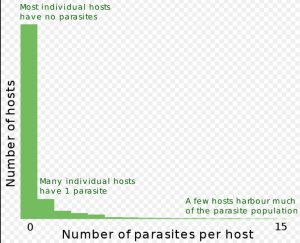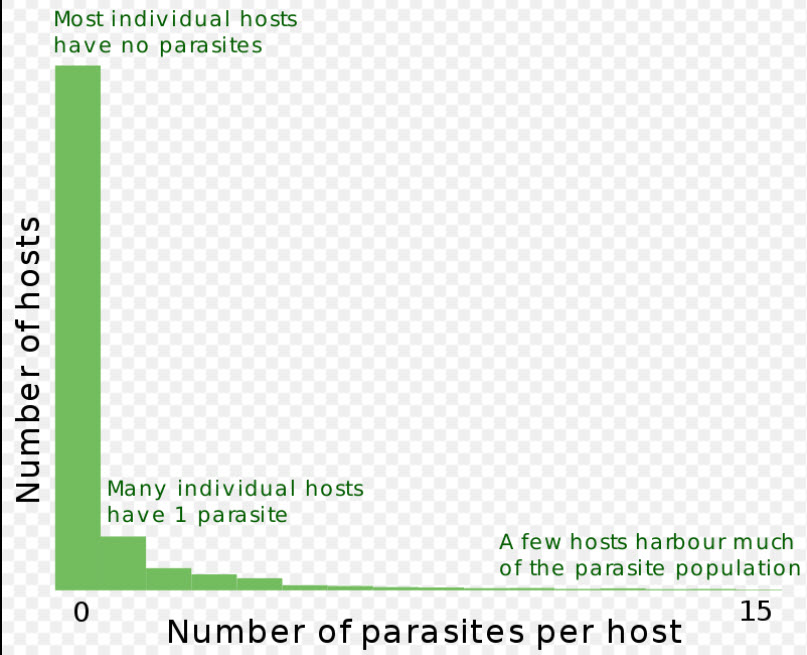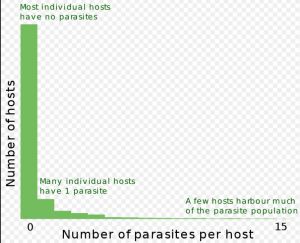Solutions: Given the long drawn out process of a Scottish Parliamentary enquiry, it is easy to forget that it was the petition ‘Protecting wild salmonids from sea lice from Scottish salmon farms’ that prompted the recent enquiries into salmon farming. We at Callander McDowell, are not convinced that either the ECCLR or REC Committee really addressed the issue. Evidence was submitted in part from both sides, but the issues raised in the petition were never really challenged.
We have always believed the wild fish sector and the salmon farming industry can harmoniously co-exist, but to do so they have to sit down together to discuss the issues. We have previously tried to arrange to meet Andrew Graham Stewart of Salmon & Trout Conservation Scotland but without success. We therefore believe that as the Convenor of the REC Committee is closely involved in the wild fish sector, that he is best placed to act as a catalyst to initiate such discussions. Unfortunately, the Convenor does not think such a role is appropriate whilst the Committee is still considering its findings. Instead, we decided to try again to invite Andrew Graham Stewart to meet for an informal chat. Sadly, Mr Graham Stewart has not even acknowledged our correspondence, let alone replied. It seems that it is either the Salmon & Trout Conservation view or no view. We simply do not understand why, if Salmon & Trout Conservation Scotland are so concerned about the fate of wild salmon and sea trout stocks, they are so unwilling to meet as a way of finding solutions.
As far as we, at Callander McDowell are concerned, the invitation remains open.
Post smolt sampling: Following our comments last week about a new paper – The influence of aquaculture unit proximity on the pattern of sea lice infection on sea trout populations on the Isle of Skye by Moore et al (The Journal of Fish Biology) Mr Andrew Graham Stewart has issued a press release saying that its conclusion is unequivocal – that the data adds to the empirical evidence that sea lice from salmon farms can cause fatal infestations of wild sea trout. www.salmon-trout.org/2018/05/25/new-study-confirms-impact-of-sea-lice-on-sea-trouts/
Mr Graham Stewart says that this study debunks the myth (shamelessly peddled by the industry and its spokesmen) that there is no evidence of negative impacts from salmon farms on sea trout. All we can say is that it is a good job we are not spokesmen for the industry because we do not peddle the myth, shamelessly or not, that there is no evidence of negative impacts. We prefer to look at the evidence and draw our own conclusions.
By coincidence, Fisheries Management Scotland, have just published the West Coast Fisheries Trusts post smolt monitoring programme for 2017. http://fms.scot/wp-content/uploads/2018/05/180222-Aqua-Sweep-Netting-Report-2017.pdf Moore et al. 2018 quotes Middlemas et al. 2013 saying that higher abundances of lice on sea trout can be found nearer salmon farms and this effect can be observed up to 30km away. The WCFT paper states that there is now uncertainty with this estimation, something we have discussed previously, as well as in the book Loch Maree’s Missing Sea Trout. If the sampling results are rearranging in order of distance, then this latest study confirms this uncertainty. The discussion section in the report notes that attempting to link sea lice levels on wild sea trout to the nearest fish farm may not be appropriate as prevailing wind direction and sea currents may transport fish farm derived sea lice away from rivers. This is a significant admission but we would prefer to explore a different issue here than look again at the relationship between distance and abundance. We will save this for another time.
What caught our eye in the report was the inclusion of a sector in the report which looks at the pressure from sea lice on wild sea trout populations. This examines the work of Taranger et al 2014, which is the basis for the Norwegian Traffic System. This states the assumption that fish will have an increased risk of mortality with an increasing lice level per gram of fish. The survey found that over 50% of the sea trout were infected with lice caught from 16 of the 22 sites sampled. This increased to 100% infected at four sites. However, nine of the sites failed to catch enough fish to meet the sampling protocol. Some of these include sites where every fish was infected.
The data was analysed to investigate whether there was potential population changing impacts from lice abundance. Nine of the sites were deemed to be of a high risk of population changing effects, of which three were estimated using very low sample sizes including one of just two fish. The use of this approach is interesting as it seems that the angling sector is keen to lead the way towards the introduction of a Traffic Light System into the Scottish salmon industry. Unfortunately, the Norwegian approach is flawed and as we can see already that a red light can be derived from a sample of just two fish.
The WCFTs do however say that the model they use has been designed for sea trout unlike the Norwegian model which is for salmon. They do say that there are a number of caveats to the use of the model because it is based on assumptions about the impacts of lice infestations and more importantly that the individuals caught are representative of the entire population within an area.
We have always said that sampling wild fish by seine netting is not without problem. Healthy fish are likely to escape the net leaving the sample to consist mainly of weaker or sick fish. Such weak fish are likely to more readily succumb to sea lice than healthy fish. This means that it is unlikely that the fish caught during sampling are representative of the wider population.
During our research, we have uncovered a few references that allude to a more scientific explanation for this uneven sampling. Given that most scientific research about sea lice aims to show sea lice from salmon farms does have an impact on wild fish, it is not surprising that this effect is given little coverage.
Mr Andrew Graham Stewart writes extensively about wild fish and he often refers to sea lice describing fish with numerous sea lice using adjectives such as sea trout carried an ‘astonishing’ 400 sea lice. Actually, this is not that astonishing at all but rather a feature of parasitic infestations. Over-dispersion is where a small number of hosts carry very high numbers of parasites whilst the rest of the population carry very few. This is known as an aggregated distribution and is commonplace.
The definition of an aggregated distribution is that parasites are distributed very unevenly amongst their hosts, with most not having any parasites whilst a few have many. This form of distribution makes sampling very difficult and requires careful use of statistics.
We would suggest that this describes the sea lice infestations extremely well. Just because sampling results in catches of 50 fish all with lice, does not mean that this infestation is representative of the wider population. This is why the whole issue of sea lice and salmon farming is a complete distraction. Wild fish populations are under threat, but salmon farms are not the problem and as long as the focus is placed on salmon farms, wild fish will remain under threat.
Over-dispersion is not something that has just been pulled out of the hat to explain sea lice. It is typical of all parasitic infestions.
We will return to the issue of over-dispersion again.

(Wiki)
Break the rod: A major debate has broken out in Norway after two Emeritus professors have said that if there is a desire to protect wild salmon then the solution is that anglers should hang up their waders and put their rods away. Simply put, their advice is to stop fishing for salmon in Norwegian rivers.
Needless to say, this proposal has not gone down well with the angling sector and more surprisingly with some scientists. However, before we look at the issues, we also note that the angling sector have broadly welcomed the new Greenland Salmon Conservation Agreement in which a 12-year ban on commercial fishing has been agreed in the waters around Greenland and the Faroe Islands. This is to ensure that adult salmon will return from their feeding grounds to rivers in Canada, United States and Europe. If we were cynical, we might suggest that the new agreement stops Greenland fishermen from catching and killing wild salmon so that anglers elsewhere can.
Emeritus professors Erik Slinde and Harald Kryvi raise a point that we have previously discussed and that is killing large breeding salmon inevitably has an impact on wild salmon’s gene pool. We have suggested that this is a form of genetic drift, which has the potential to remove the strongest genes from the breeding stock. They argue that it is better to leave the fish to breed than to catch and kill them. They even suggest that catch and release may not be a solution, as it can be just as damaging to the stock.
Erik Sterud of Norwegian Salmon Rivers says that he can only conclude that the two professors are simply opponents of sports fishing. We are not surprised that the professors are blamed. It is never the anglers’ fault that wild salmon stocks are threatened. It is always someone else.
It is always of interest to us that the angling sector is keen to deflect attention away from their own activities rather than address the main issues. Mr Sterud has spent his week in a lengthy Twitter exchange with the Norwegian Seafood Council arguing that Fjord Trout is not trout and consumers are being misled. Fjord Trout are Rainbow trout that are grown in the sea. However, according to Mr Sterud, Rainbow trout have been assigned the Latin name Oncorhynchus which means it is related to the Pacific salmon species rather than the brown trout Salmo. Using that same rationale, it could be argued that Pacific salmon shouldn’t be called salmon as they are a different species to Salmo salar. The real point is that as a functionary of Norwegian Salmon Rivers, shouldn’t Mr Sterud be focussed on the threats to wild fish rather than how a farmed fish is marketed to consumers. As we have suggested, it is more about deflecting attention away from what anglers are doing than the marketing name of a fish.
We have the same problem in the UK, which is why salmon farming is made into such an issue. The problem isn’t salmon farming. It is what is happening in Scottish rivers and which is why anglers’ representatives in Scotland are also so reluctant to come face to face with the salmon industry.
Finally, we were interested to note that the ‘Vitenskapelig råd for lakseforvaltning’ – who provide scientific advice on salmon management have issued a statement that scientists do not consider that angling is a threat to wild salmon. Their argument is that every river has a limit as to the number of new salmon fry it can support and thus if there are too many salmon returning to breed then a lot of fish will have wasted their efforts. If that is that case, we shouldn’t be worried that the number of migrating salmon has fallen from 20% in the 1980s to just 5% now. These extra fish would be breeding for no purpose as their off-spring wouldn’t survive due to the competition for space from other fish’s young.
It seems that these scientists believe that if too many fish return, then it is ok for anglers to catch and kill them.
Sickness: We, at Callander McDowell, have not heard much from Mr Corin Smith since his revelation that he had been engaged to conduct a report on the economics of salmon farming. He appears to have turned to using his photographic skills as the basis of his criticism of salmon farms. We understand that he has visited Lochcarron and taken photos of the local farm using a drone. He then posted the news that this farm produces sewage the equivalent to a town of 8,500 people. He says that the local village of Lochcarron has a population of just 900 and doesn’t release its waste into the sea. Not withstanding the fact that billions of fish release their waste into the world’s oceans every day without criticism from campaigners, we mention this because the Times newspaper recently reported that seven out of ten oysters sold in the UK are contaminated with toxic norovirus, otherwise known as the winter vomiting bug. The source of the virus has been identified as human sewage and farm waste. Mr Smith asks on his Facebook page whether terrestrial farms would be allowed to release animal waste in to water courses and then into the sea or would human waste end up in the sea. Apparently so on both counts and it appears to be a widespread problem as illustrated by the level of contamination in oysters.
The survey of bivalve contamination was carried out by the Centre for Environment, Fisheries and Aquaculture Science (CEFAS) who analysed 630 oysters bought online and from shops and restaurants. They found norovirus in 69% of samples. The Times says that most people recover from winter vomiting bug but there are about 200,000 deaths globally a year including a few hundred in the UK.
The standard test of cleanliness for oysters measures E coli bacteria but not norovirus. Around 60% of oyster beds are classed as contaminated. Despite such impact on health, it is surprising that the Times report was not covered elsewhere. By comparison, claims of salmon farm ‘sewage’ appear regularly in the press even though there is no link to human disease. It is puzzling that the ECCLR Committee should investigate salmon farming yet ignore the norovirus contamination.
At the same time, the Scotsman newspaper has reported that 25 Scottish beaches have been rated excellent in the latest survey of bathing beaches. Beaches in the Highlands were given the best ratings with none being classed as poor. Four of the beaches are located on the west coast and all four are rated excellent, despite the presence of all this fish sewage in the sea. The West Highland Free Press particularly mentioned the beaches of Gairloch and Sands, which is described as a west coast gem. This is despite these beaches being located in the heart of the salmon farming zone.
By comparison, eleven beaches around Scotland were rated as poor with the most common reason given as short episodes of pollution caused by the impact of heavy rainwater on sewage systems as well as field run off and other agricultural activity!


